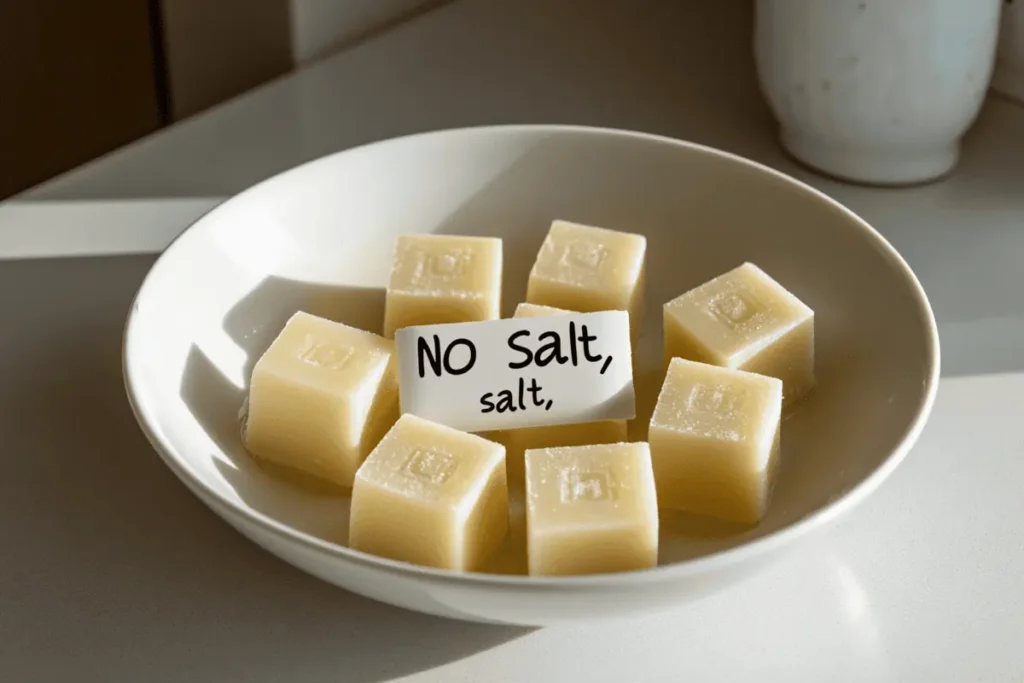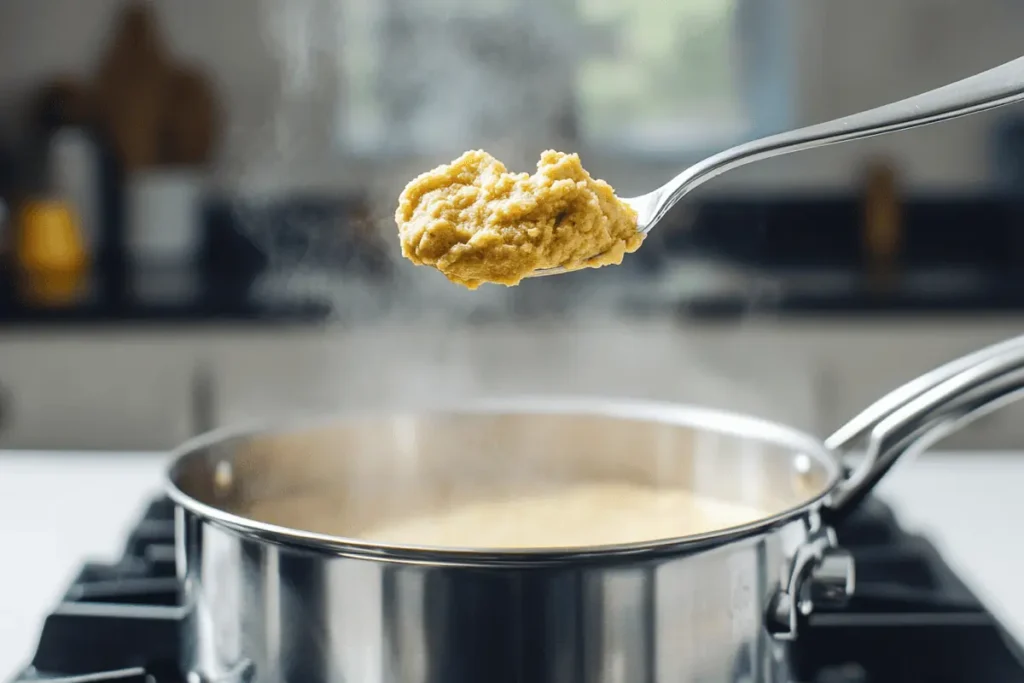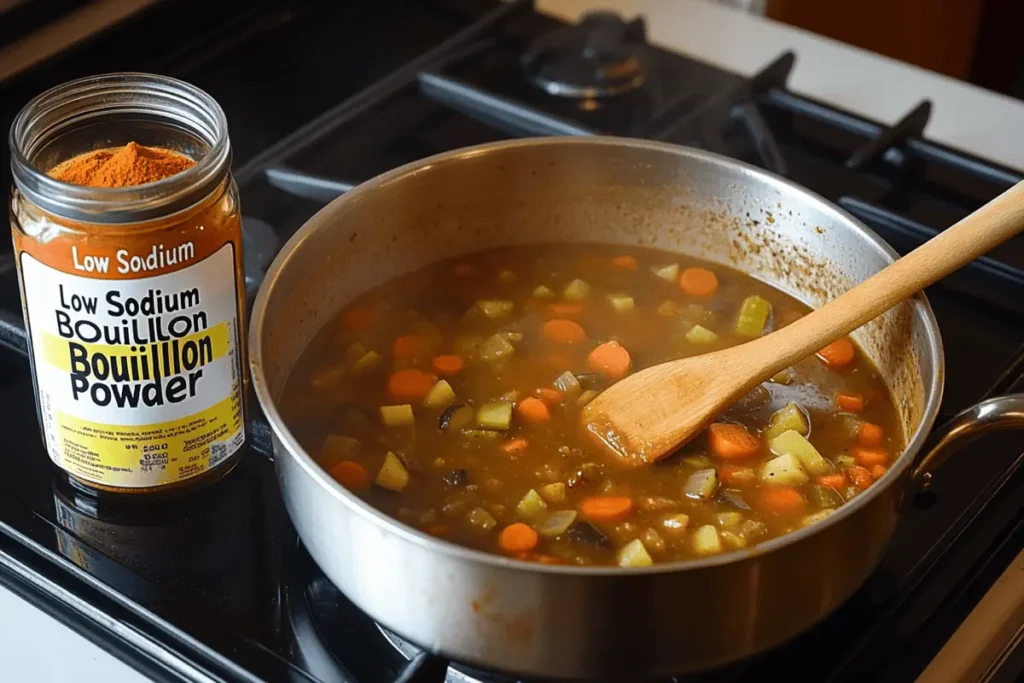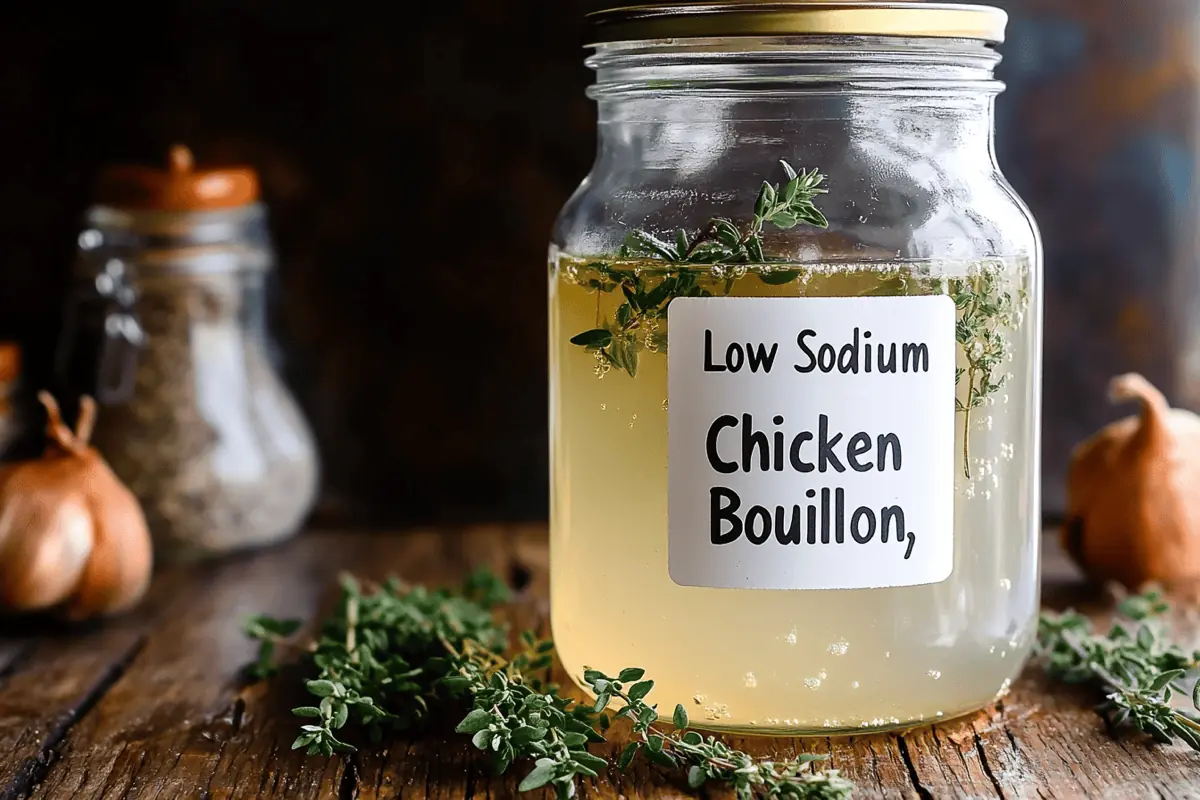Cooking delicious meals often relies on using savory seasonings. However, many people want to limit salt for health reasons. Low sodium chicken bouillon addresses this concern. It delivers rich, chicken-based flavor without the large amounts of salt found in traditional bouillon. So, you can create tasty soups, sauces, and casseroles while managing your sodium intake. Moreover, no salt chicken bouillon can still enhance your dish without leaving you thirsty or worrying about hidden salt.
In fact, many home cooks worry that cutting salt also slashes flavor. Yet, no sodium chicken bouillon proves otherwise. By relying on quality ingredients like chicken, herbs, and natural spices, these products ensure a deep taste. Additionally, brands like knorr low sodium chicken base, or homemade salt free chicken bouillon, empower you to prepare meals that suit your dietary needs. Because you can still tweak final seasoning, you have total control over the saltiness. Now, let us explore more details, including ways to pick, store, and use sodium free bouillon.
Further, if you plan to reduce your sodium levels, you will find a wide range of no sodium bouillon or low sodium bouillon powder on store shelves. Some are made from real chicken extracts. Others use vegetable ingredients and natural flavors. Whether you prefer to buy or make your own, you will see how you can enjoy a savory lift in your cooking without worry. From everyday soups to special holiday feasts, these products help you maintain a healthier balance. Let us begin by understanding what sets low sodium chicken bouillon apart.
Table of contents
Why Low Sodium Chicken Bouillon Matters
A high-sodium diet can sometimes negatively affect blood pressure. Medical experts often recommend reducing salt to support heart health. However, many packaged foods contain significant sodium. That includes standard bouillon cubes or powders. Hence, switching to low sodium bouillon or no sodium chicken broth powder can help curb overall salt intake. You still add that beloved chicken essence, but you skip the extra salt load.
Another reason you might prefer low sodium chicken bouillon is versatility. When you start with minimal salt, you can add as little or as much seasoning as you want. By contrast, standard bouillon sometimes leads to oversalted dishes if you are not careful. This difference is crucial if you cook for family members with varying dietary needs. For instance, some might crave a bit more salt, while others must restrict it. Low sodium bouillon creates a neutral, flexible base that you can personalize.
Additionally, these products often contain fewer preservatives. Though not always guaranteed, many no sodium bouillon makers focus on cleaner ingredient lists. You can check labels to confirm. Also, cooking with minimal salt encourages you to explore other seasonings. You might find yourself experimenting with fresh herbs, vinegars, or lemon juice to amplify taste. As a result, your palate can expand in pleasant ways.
Salt Free Chicken Bouillon vs. Low Sodium Variants
Salt free chicken bouillon means zero added salt. However, the final product might still have natural sodium from chicken or vegetables. So, you should look at the nutrition facts for accuracy. On the other hand, a “low sodium” label indicates less salt than a standard version. The exact threshold can differ among brands. You might see “reduced sodium” or “less sodium” as well. Each phrase reflects that the item is lower in salt than a regular variant, though not necessarily salt-free.
Both categories, no sodium chicken bouillon and reduced-salt bouillon, help you manage your sodium. But, if you require a strict no-salt diet, you may want to seek the salt free variety. If you merely want less salt, a standard low sodium bouillon product might suffice. In any case, always scan the packaging for the sodium content per serving. Then, you can select the best fit for your personal goals.
Different Types of No Sodium Bouillon
Low sodium chicken bouillon can come in various forms. Some are cubes, shaped for easy measuring. Others are powders or granular forms you can spoon into recipes. You can also find a concentrated paste in jars. Each type offers unique advantages. For instance, cubes are compact for traveling or storing. Meanwhile, a paste or powder may dissolve faster and let you control small increments more precisely. No sodium bouillon or sodium free bouillon often uses the same shapes, but with minimal or zero added salt.

Cubes vs. Powders vs. Pastes
- Cubes: These solid blocks are pre-measured. You usually dissolve one cube per cup or two cups of water, depending on the brand. However, you might find it tricky to use half a cube.
- Powders or Granules: These let you sprinkle or spoon out exactly how much you need. Often, you can dissolve them quickly in hot water or add them directly to a dish.
- Paste: A paste-based knorr low sodium chicken base or other brand often provides the richest flavor. You might need to refrigerate it after opening. A small spoonful can pack a punch.
No matter which form you choose, you can keep a stash in your pantry or fridge. That ensures you have a reliable base for soups, stews, or even quick stir-fries. Because you skip a lot of salt, you can taste your dish more frequently. Then, you can decide if you want to sprinkle in a dash of salt, pepper, or even chili flakes.
Uses for Low Sodium Chicken Bouillon
There are many ways to enjoy low sodium chicken bouillon. If you normally cook pasta in salted water, you could boil it in water flavored with no sodium chicken bouillon instead. That approach enriches the pasta’s taste from the inside out. Similarly, when making rice or quinoa, you can swap plain water for a gentle bouillon-infused liquid. That step introduces subtle chicken notes to your grains.
Moreover, you can stir low sodium bouillon powder into sauces or gravies. Start by sautéing onions or garlic, then add flour to create a roux. Pour in water or milk, then whisk in the bouillon. Finish with a dash of herbs or black pepper. You now have a thick, savory gravy suitable for mashed potatoes or roasted vegetables. If you want more complexity, add a splash of white wine or lemon juice to brighten the flavor.
Elevating Soups and Stews
Soups and stews naturally benefit from bouillon. Typically, a standard recipe might call for a high-sodium broth. Instead, use no sodium chicken bouillon or a low-salt version. You can then add vegetables, beans, or noodles without the soup becoming too salty. If you find the flavor lacking, drop in fresh herbs like thyme, basil, or cilantro. Or consider some chili peppers for a spicy edge. In this manner, you control all layers of seasoning. The end result is a balanced soup or stew that tastes homemade and does not rely solely on salt.
Choosing the Right Product
When looking for low sodium chicken bouillon at the store, you will see many brand names. Some popular ones include knorr low sodium chicken base or private-label versions from major retailers. You might wonder how to pick a good product. Start by reading the nutritional facts. Check how many milligrams of sodium are in each serving. Also, glance over the ingredient list. A shorter list often suggests fewer artificial additives. Another factor is the presence of real chicken or vegetables. Some bouillons rely heavily on artificial flavors, while others use genuine chicken stock or dehydrated vegetables.

Homemade No Sodium Chicken Broth Powder
If you feel adventurous, you can try crafting your own no sodium chicken broth powder. It involves drying or dehydrating cooked chicken, vegetables, and herbs, then grinding them into a fine powder. You might add garlic powder or onion powder for extra fragrance. Though time-consuming, this process yields a custom blend. You control quality, and you skip preservatives. Yet, it requires special equipment like a dehydrator or a low-temperature oven. Also, keep in mind that homemade powders can lose potency over time, so store them in airtight jars away from heat.
Cooking Tips and Flavor-Boosting Strategies
Cooking with no sodium bouillon can be straightforward if you employ a few techniques. First, sauté your base ingredients in healthy fats, like olive oil. For instance, onions, carrots, and celery. That browning step deepens the overall flavor. Then, dissolve your bouillon in warm water or add it directly to the pot. Stir thoroughly so it distributes evenly. Next, taste as you go, especially if you are used to standard, salt-laden bouillon. The difference in taste might require small adjustments. For example, you might want more black pepper or additional savory herbs.
Additionally, experiment with acid-based elements. Vinegars, citrus juices, or even tomatoes can lend brightness to your dish. Low sodium bouillon sometimes lacks the “pop” that salt provides. However, acids can perk up flavors without changing your sodium level. Similarly, a pinch of sugar or honey can balance tangy notes, especially in tomato-based sauces. You can also incorporate umami-rich items like mushrooms, miso, or nutritional yeast. These bring savory depth that can compensate for the missing salt.
Combining Bouillon with Fresh Ingredients
You might find that mixing no salt chicken bouillon with actual homemade stock or leftover chicken pan drippings results in a perfect synergy. The bouillon provides consistency, while the fresh elements add natural flavors. This fusion can be handy if your homemade stock tastes too mild, yet you do not want to dump in a ton of salt. Meanwhile, if you enjoy more robust notes, drop in dried chilies or smoked paprika. In effect, you build layers of taste that overshadow the lack of salt. The more you practice, the easier it becomes to create complex flavors with minimal salt.

Conclusion
Low sodium chicken bouillon allows you to craft savory meals without worrying about excessive salt. You can choose from various forms, including no sodium bouillon cubes, powders, or pastes. By doing so, you maintain more control over the final seasoning in dishes. Whether you rely on store-bought brands like knorr low sodium chicken base or you whip up your own no sodium chicken broth powder, the result is a versatile cooking companion that benefits your health.
Additionally, you can spice up your recipes with herbs, acids, or umami ingredients. That approach ensures your meals remain lively and full of depth. Ultimately, shifting to low sodium bouillon does not mean sacrificing taste. In fact, it may open the door to more creative flavor combinations and a more balanced approach to cooking.
Frequently Asked Questions
What is a healthy alternative to chicken bouillon?
You can try homemade chicken stock or vegetable stock with fresh herbs. A low-sodium brand of bouillon can also be a healthier option.
Does better than bouillon make a low sodium version?
Yes. Some variations labeled as reduced sodium or low sodium exist. Always check the label to confirm the exact sodium content.
Is chicken bouillon high in sodium?
Often, yes. Regular bouillon can contain a lot of salt. Low sodium or no sodium versions offer a healthier option.
How do you reduce sodium in bouillon cubes?
You can dissolve them in extra water or combine them with unsalted stock to dilute the salt content. You can also opt for low sodium bouillon powder.

